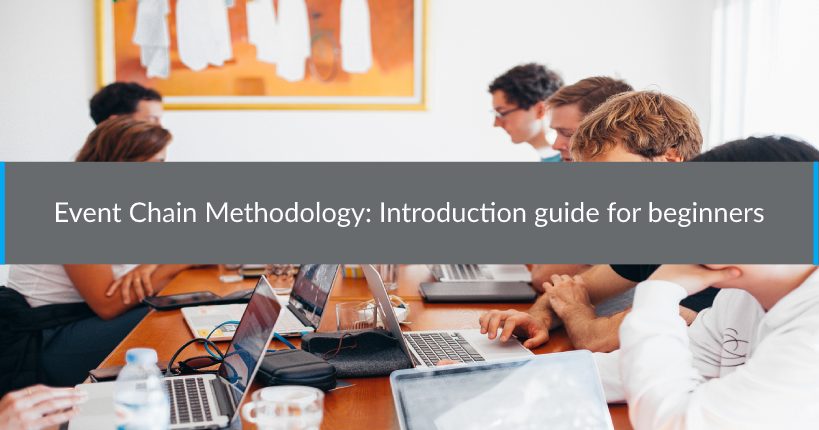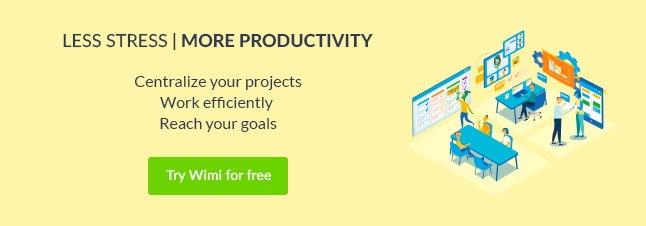Imagine a perfect world where all projects, regardless of size, are completed on time and without exceeding the initial planned budget, and where all clients are satisfied. Unfortunately, this marvellous world doesn’t exist. More commonly, project management is a path strewn with pitfalls and projects are rarely finished perfectly on time, without encountering a single problem.
To reach their objective and succeed in their projects, the project manager and his team should attempt to plan the course of the project fairly. However, their decisions are often influenced by stakeholders who demand quick deliverables. The concern is that these schedules do not take into account the potential risks and the possible hazards which can derail the project. A single/only event can trigger a chain reaction of events which can impact the entire project and harm its success. The chain events methodology or the Event Chain Methodology (ECM) can help you to resolve this problem.
Definition
Often, the timing of the completed project can be very different to what you originally planned. Certain tasks can take more time than planned or cost more, new tasks emerge, new resources are required, or the external event can influence the progress of a project (problems with suppliers, raw material shortage, natural disasters, etc.). All occurrences are rarely anticipating in the initial planning process.
Chain events methodology is a technique to analyse the uncertainty in project planning. It consists of identifying and managing unforeseen events and their interrelationships (chain of events) as well as how they affect project planning.
While it is not a risk management method, it improves the accuracy of risk evaluation and helps to create project schedules which take into account the risks.
Notably, the ECM method works by using the Monte Carlo simulation (a computerized mathematical technique) which allows you to take into account risks and their impacts on project planning to better cope with uncertainty. Thus, the project manager can see how external events affect project tasks (task delay or cancellation, rising costs, triggering of other risks, etc.), determine the likelihood that certain risks will occur and determining the point at which the risk should occur during a task.
How does it work?
The Event Chain Method is based on 6 principals.
1. Timing of risk and state of activity
In project management, tasks are not always a continuous and uniform process. The external events can change a task and move it from one state to another) in progress, finished, delayed). These external events occur randomly during the task execution and often have a negative impact on the entire project; however, the impact can also be positive. For example, the bankruptcy of a raw material supplier can delay the project but changing suppliers can reduce costs and delivery times.
2. Chain of events
Some external events can lead to other events, this is what we call event chains. These event chains can strongly affect the progress of a task or of the entire project, notably leading to delaying the task which can in turn delay the following task, and so on and so forth. Finally, the project can accumulate a considerable delay or completely fail due to a single unforeseen event.
3. The Monte Carlo simulation
The Monte Carlo simulation is used to quantify the common consequences of events and event chains that are previously defined in a project. It uses the likelihood that risks will arise and their impacts as input data. This computerized, mathematical technique provides a probability curve for project planning,
4. Critical event chains
The events or event chains that are most likely to affect the project are called critical events or critical event chains. By identifying them in advance, it is possible to mitigate their negative effects. In order to do this, you need to analyse the links between key project parameters such as project duration or cost and event chains.
5. Tracking performance of event chains
One of the fundamental principles of ECM methodology consists of continuously monitoring the progress of tasks to ensure that up-to-date data is used in the Monte Carlo simulation.
Hence, by using the latest updated information, it is possible to recalculate the probability of occurrence and the timing of events and therefore generate new planning for the project.
6. Diagrams of chain events
In order to explain the relationship between external events and tasks, their impacts and to understand how they mutually influence one another, we use chain event diagrams.
With the help of arrows, we represent chain events associated with a task or a specific time interval on the Gantt chart. Then, we assign a different colour to each event and to each chain of events. A distinction is also made between global events that affect all the tasks in a project and local events that affect only one task. The chain events diagrams simplify risk modelling and analysis.
Conclusion
In project management, no project is immune to risks and unforeseen occurrences. The progression of a project should be planned to take into account the external events which can have disastrous consequences, causing delays or additional fees and can drive the project to fail.
Event chain methodology improves the accuracy of evaluating risks and helps to plan projects in a fair and realistic way taking into account all the external events likely to disrupt the progress of a project.
Manage your projects using other methodologies such as Agile, Waterfall, PRINCE2, PRISM or Benefits realization.










